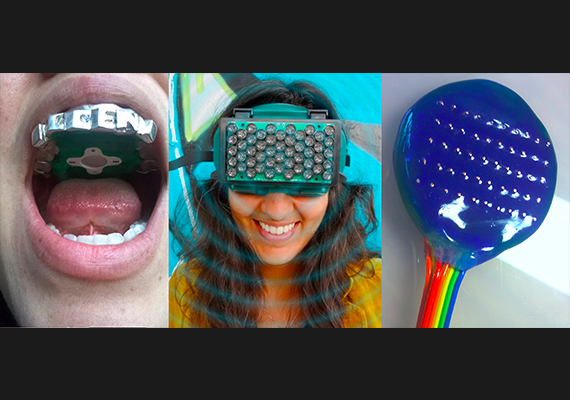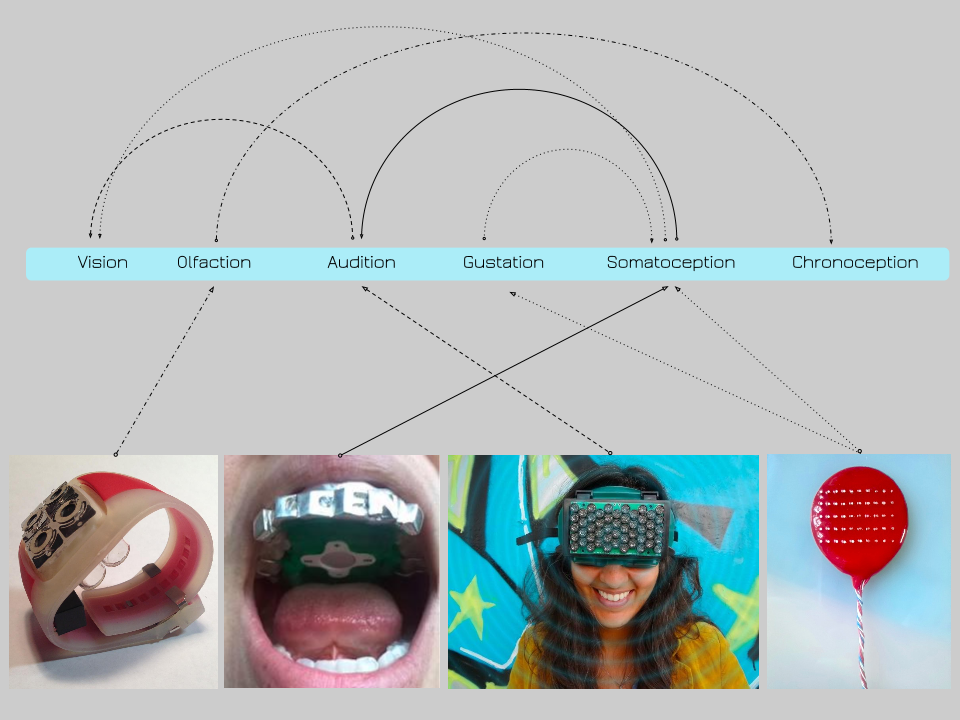
A series of experimental, wearable devices that expand sensory experiences through cross-modal computer interaction.
This research explores perceptual interfaces that translate information through cross-modal sensory methods. In four case studies, this thesis appropriates common devices, transforming their sensory functionality.
+ Play-a-Grill: bone conduction music player jewelry;
+ Echolocation Headphones: seeing space through parametric sound;
+ PopMatrix: tongue display units for tactile sight gastronomic experiences;
+ Scent Rhythm: olfactory mapping to the body’s circadian cycle.
 These mobile devices test sensory-mixing mechanics to create alternative electronic information displays. This shift of information output tests the potential of further integrating computing applications with our wide physiological sensory array. The familiar cultural identity of these base devices has led to iterations that draw from their core functionality to find alternative perceptive pathways — to instigate new possibilities: experiences and uses based on mutli-sensory interactions and their delivery on novel interfaces to their participants.
These mobile devices test sensory-mixing mechanics to create alternative electronic information displays. This shift of information output tests the potential of further integrating computing applications with our wide physiological sensory array. The familiar cultural identity of these base devices has led to iterations that draw from their core functionality to find alternative perceptive pathways — to instigate new possibilities: experiences and uses based on mutli-sensory interactions and their delivery on novel interfaces to their participants.